+91-9819957779
admin@saptarishisastrology.com
Gallery
Forum
Free Astrology Course
Enroll Now
Big Deal - Up to 50% Off
Big Offers
Free Astrology Course
Enroll Now
Big Deal - Up to 50% Off
Big Offers
Menu
Categories
- Dasha
- Report Consultation
- NVRA Raja Meena 2 Junior
- :K GURU RAJESH
- Astrology Books
- Dr. Suresh Chandra Mishra
- UBSPD Publications
- Sumati Samant
- J.N.Bhasin
- Marriage Astrology
- Birth Time Rectification
- Tilak Chand Tilak
- Muthireddy Prabhakar
- B Hariharan
- Jaimini Astrology
- Mundane Astrology
- Crystal
- Dr. Rudra Dev Tripathi
- Dr. K S Charak
- Prakhya art printers pvt.ltd.
- Iranganti Rangacharya
- BigNote Publications
- Consultation by Sunil John
- Vijaya Kumar
- Dr. K S. Charak
- Children And Astrology
- Panchang
- O.P.VERMA
- Vani Publications
- KSR Prasad
- Medical Astrology
- Astrology Webinar
- Niroge Duniya
- ;Jay Yadav
- Bhrighu Astrology
- Vastu Consultation
- Shizuko Yamamoto
- Ramesh Vaish
- J K Sethi Rohit Sethi Chetan Sethi
- Authors
- Mridula Trivedi
- N E MUTHUSWAMY
- Brahamananda Tripathi
- V.P. GOEL
- Meenakshi Priyadarshini
- ASHISH GUJRAL
- Pradeep Bhushan Goel
- Pawan Ballabh Thapliyal
- Dharmadatt Vaidh
- Amadea Morningstar
- Heinrich Zimmer
- GOPAL SHARMA
- PT. TARACHANDRA
- RAM LAL SHAH
- C. H. Asrani
- HARISH JOHARI
- Shristi Sahoo
- Partha Sarathi Rout
- SHRI RADHARAMAN 'SUMAN
- ABHINAV MISHRA
- RAMESHWAR CHANDRA SHASTRI
- DR. CHANDRAMOHAN JHA
- Shivesh Prasad Mishra
- Vikash Sharma
- Z. Ansari
- V. S. KALYANRAMAN
- Satish K. Navathe
- Jagannath Bhasin
- JATINDER PAL SINGH SANDHU
- LAXMI KANT VASHISTH
- Dr. Uday Kant Misra
- Acharya Bhawna Bhatiya
- GAYATRI DEVI VASUDEV
- Shalila Sharamon
- Gopal Das Neeraj
- John E. Coleman
- RAMESHWAR BHATTA
- Vijaya Kumar
- Bukkyo Dendo Kyonkai
- SHRI RAMCHANDR
- Rakesh Soni
- Tilak Chand Tilak
- DR. NEERAJ PANDEY 'DADA'
- Deepak Bisaria
- Dr. Challa Somasundaram
- Howard Beckman
- Lalitha V
- Kunwarlal Jain
- N. CHIDAMBARAMIYER
- KUSUM VASHIST
- Hemant Kumar Sharma
- Dr. Revathi Vee Kumar
- Deepak Bhardwaj
- M.K. AGARWAL
- DR. SHANKER ADAWAL
- VASANT LAD
- Vivekshri Kaushik Vishvamitra
- MOHAN BHAI D. PATEL
- Dr. N.H.Sahasrabuddhe
- BANSI PANDIT
- Bryson
- Sawan
- Idea Baba
- Pandit Pannalal Jyotishi
- Siddhayogi Sivadasan Ravi
- PT. LASHANLAL JHA
- K.P. KRISHMAN’S
- Thich Nhat Hanh
- Dr. Rajbeer Singh
- Shri Ram Gopal Goswami ji
- T.P Trivedi
- Dr E S Neelakantan
- Shri Vindheshwari Prasad Dwivedi
- Joni Patry
- Ashwini Baqaya
- Naval Singh
- ASHOK BHATIA
- S.S Dahiya
- Samprasad Vinod
- ATREYA
- Joseph Campbell
- SEVARAM JAIPURIA
- SHRI KASHIRAM
- BINOD KUMAR JOSHI
- Ramesh Vash
- B.K.S. Iyenger
- S. Prakash
- Shri Bhagavatananda Guru
- MANDAN SUTRADHAR
- Durga Prasad Shukl
- GIRIJASHANKAR SHASTRI
- Dr. Amar Aggarwal
- Dr Amar Agarwal
- G.V. Prabhakara Murthyc
- U.K JHA
- DR. N. RAMAMURTHY
- E. S. B. R. MISHRA
- LR Chawdhri
- M. H. K. Shastri
- Baby Krishna
- RUDRADEVI TRIPATHI
- David Frawley
- JAMES T. GLOVER
- Rajbali Pandey
- E Rameshwar Prasad
- JWALA PRASAD MISHRA
- Paramahansa Yogananda
- M. ANJANEYULU
- BIJOYLAXMI HOTA
- P. MAHIDHAR SHARMA
- K Hariharan
- Rajendar Menen
- MAHARSHI YATINDRA
- PROF. MRIDULA TRIPATHI
- Tirpur S. Gopalkrishnan
- Onkar Lal Sharma `pramad`
- Pandit Shri Kamlakant Thakur
- Madhav Janardan Ratate
- Alan Leo
- Sita Ram Singh
- Shrimdhukanta Jha
- Rajbir Singh
- Hemant Thakorbhai Bhatt
- Indrodeep Banerjee
- P. L. KHUSHU
- RAMA KRISHNA GOYAL
- Sunil V. Joshi
- PT. KRISHAN ASHANT
- Kaulacharya Jagdishanand Tirth
- anhavi N. Sahasrabuddhe
- Hart De Fouw
- R. D. MAHATME
- RAMESH CHANDRA SHRIVASTAVA
- C. M. Srivastava
- Mohan Kumar Kashyap
- Sri M.P. Shanmugam
- Mahrishi Bhrigu
- Sudhir Kove
- SHRIKRISHNA 'JUGNU
- p khurran
- Dr M.H.K. Shastri
- Pt. Ramjilal Gaur
- Girish Chandra Joshi
- Dr. A. V. Mohandas
- Neelam Gupta
- Ramesh Kumar
- H.K Thite
- K.C Vats
- PT. MUKUNDVALLABH MISHRA
- E.d. Perrone
- AMRITA PRITAM
- Nishantketu
- ISHWARI PRASAD PANDEY
- GEETA JOSHI
- Guneeta Dhingra
- APARNAA N RAJE
- U Suman Lathaa Metha
- MATRI PRASAD PANDEY
- DA Negandhi
- S S Gola
- KSR Prasad
- DR. NARESH JHA
- Dr. Brijbihari Nigam
- K N RAO
- B. Hariharan
- DR. V.P. SHUKLA
- PT. LASANALAL JHA
- Bepin Behari
- Pramod Kothari
- SURYA NARYANA VYAS
- ANURAG MATHUR
- Vasudeo Govind Apte
- R. Verma
- J. Sithamparanathan
- PT. BASTIRAMJI
- Vaidya Suresh Chaturvedi
- Dr S.R Jindal
- DINA NATH
- A.R.Hari
- VAIDYA MOOLCHAND BHARDWAJ
- Padmanabha Sharma
- Rekhaa Kale
- R.N. Vyas
- Prabodhchandra Madhukar
- Chandrashekhar Mishra
- Pandit Shivprasad Sharma
- O.P. Verma
- M G Kastwar
- Shailja Pandey
- Deepak Kapoor
- SAMPATH KUMAR MEDAVARAPU
- ER. P.L. KHUSHU
- Charubel
- K.S. RAMAKRISHNA AIYAR
- PARMANAND SHARMA
- Light Miller
- R. K. Madhukar
- Mahesh Dutt Sharma
- PT. SHRI RAVIDATTA
- Peter Newton
- Amit Abraham
- NAVNEET KAUSHIK
- Paul Bruntan
- Pramod Sagar
- SHANKAR BHAROSA JHA
- Pdt. Gyankunsh Kaushik Ji
- Dr. Nimai Banerjee
- Shri Vishnu K Acharya
- H.A. Padmini
- Vivekshri Kaushik Vishavamitra
- Sharad C. Joshi
- Birendra Nautiyal
- A V Mohandas
- Kanta Gupta
- C.A. SUBRAMANIA AIYAR
- S K DUGGAL
- Dr. Hanif Khan Shastri
- ADAMUIR
- Vishnu Dass
- Dennis M. Harness
- B.D. Sharma
- PT. SHALAGRAM JYOTISH
- SRI BHARATI KRSNA TIRTHAJI MAHARAJA
- Rajiv Sachdev
- Upendra Dhakre
- Himanshu Shangari
- JAYANTA BHAUMIK
- DR. DURGADUTT MISHRA
- Prem Dixit
- MAHAYOGI PILOT BABA
- Dr. Gauri Shankar Kapoor
- Pandit_sri_achyutananda_jha
- Dr.K.GURU RAJESH
- DR. SATISH CHANDAR AGARWAL
- K. GURU RAJESH
- Diwakar Shastri
- Shalini Dhasmana
- Dr. Sou. Achala Bhimsenkulkarni
- Mohan Srinivasan
- WILLIAM GEORGE BENHAM
- Bruno Dagens
- C. E. Lindgren
- Grehlakshmi
- Niketan Anand Gaur
- Pt. Ram Swarup Shastri
- SOUMYA KUMAR
- Umesh Pandey
- SHRI SHYAMSUNDAR
- K. SUBRAMANIAM
- ACHARYA VIJAY ANAND 'LOHAT'
- Lokmani Dahal
- Anantha Sharma
- Atul Sehgal
- Om Swami
- Shri Datta Raj
- N. Singh Dahiya
- Manik Chand Jain
- PT. GANGA PRASAD
- C.J. Krishnaswami
- Amanish Kumar
- MAHAN VIR TULLI
- Shiv Raj Sharma
- Rachna Bhola
- SHAILENDRA SHARMA
- Bryan Miller
- HARISH CHANDRA GAUTAM
- B.B. Paliwal
- JAYANT BURDE
- Dr. Brij Bhushan Goyal
- R. KRISHNA
- Suresh Shrimali
- kaali Pandit
- Shiraz
- SHRI YUTARAMA SHARMA
- Devdatt Patt
- Govind Shashtri
- Gavin
- K.K Pathak
- VS Kalyanraman
- S B R mishr
- DINESH S. MATHUR
- QAISER HUSSAIN
- Pt. Venimadhav Goswami
- JUDE C. WILLIAMS
- Shantree Kacera
- Dr.Styapal Duggal
- Frank Arjava Petter
- SHRI RAMSWARUP
- Vandana Singhal
- A B Shukla
- DIMPLE
- A.P. VELAYUDHAN
- Surendra Kumar Patawari
- Raj Kumar Aggarwal
- Dr. K N Saraswathy
- Hemant Bhatt
- SHRI KIRIT 'BHAI JI
- Dr. Gaurishankar Kapoor
- A Mahadeva Sastri
- V.P. Jain
- K. NARAYANASWAMI AIYER
- DR. SATYENDRA MISHRA
- Dr. Ravi Rao's
- Dr. Sou. Achala Kulkarni
- Anita Mathur
- TULSI RAM SWAMI
- David Pond
- Vinay Singhal
- SWAMI VENKATESANANDA
- SHRI VANSHIDHARA
- Ashwini Kumar
- Naresh Singal
- Vagaram Parihar
- BALDEV PRASAD MISHRA
- K S Krishnamurti
- S.S. CHATTERJEE
- DR. RAMESHWAR PRASAD SHARMA
- SHRI KAMAL KANT SHUKLA
- MADHUSUDAN SHARMA
- Ed. Heron Allen Henry Frith
- Sachchida Nand Mishra
- Piyush jen
- V. S. Sastri
- Akhila Kumar
- JAGDISH RAJ RATRA
- DR. BHOJRAJ DWIVEDI
- BRIJBHUSHAN LAL
- Meta B. Doherty
- P.V.R. RAYUDU
- Mahesh Sharma
- AYODHYA PRASAD SHARMANA
- Hiroshi Motoyama
- RAJEEV JHANJI
- DR. RAJEEV SHARMA
- VAYUNANDAN MISHRA
- Paramhansa Yogananda
- Pt Gopal Dev Gaur Shastri
- Yvonne Frost
- Acharya Bhaskaranand Lohani
- Dr. M N Muley
- Girija Shankar Shastri
- Neera Sawhney Chopra
- Shri Kapileshwar Shastriana
- R. SANTHANAM
- Maya Gupta
- Irangati Rangacharya
- UMA SHANKAR PALIWAL
- Devkinandan Singh
- Joyce Bueker
- USHA SAXENA
- Bhagwan Dev
- SHYAMLAL
- RONNIE GALE DREYER
- Richard Tunis
- RAKKHI SAMEER
- Madhivanan
- Neela R Gopal
- B. ARDHANAREESWARAN
- Thilak K.Baskaran
- Kanakkumar B. Bosmia
- SHASHIKANT OAK
- S.D. Udhrayan
- Suhas Dongre
- S.K. Kapoor
- RAMAMURTHY N
- Surakant Jha
- Prakhar Prajnanand Saraswati
- D. P. SAXENA
- M.K VISHWANATH NAYAR
- S.K. Anil
- Ridhhi Kapoor
- SAGE SATYACHARYA
- Jhampa Shaneman
- Rachel Fell Mcdermott
- B.R. Kishore
- VIRENDRA NATH SHARAMA
- SHRI MEGHARAJ
- N. H. Sahasrabudhe
- Bharat Singal
- PT. SUKHANAND MISHRA
- Dr. S.C. Kursija
- ACHARYA BHAGWAN SWAROOP VYAS
- DR. D.D. PANSE
- JAYDEEP YADAV
- Wally Krause
- Sun TZU
- Mithalal Himatram Ojha
- Rameshwar Sharma
- Kaushik Majumder
- KARAN K. MAHAJAN
- Dr. Nemani Venkata Raghunatha Rao
- Jitendra Trivedi
- DR. K V PRATAP KUMAR
- Asha Wollmann
- MAHENDER SINGH RANA
- SHARDENDU
- Gopesh kumar Ojha
- Maya Tiwari
- Stephen H. Wolinsky
- Upadhayay Rajni Kant
- Pt. Narayan Prasad Mishra
- Madame La Roux
- Gautami N Sahasrabuddhe
- R.K. Baqaya
- Saket Shah
- Sunita Upadhyay
- BADRI NARAYAN TRIPATHI
- MADAN MOHAN JOSHI
- R.P. Birthare
- Narayan Dutt Shrimali
- Srinivasa Sharma
- (JAGJIVANDAS GUPT)
- Marc Edmund Jones
- DR MANOJ KUMAR
- B. SURYANARAIN RAO
- Raj Kumar
- SOHANLAL VAYAS
- Suresh Chandra Mishra
- S.G. KHOT
- S.S SAREEN
- MUKUNDA DAIVAJNA
- L.C. Sharma
- Brajbiharilal Sharma
- Arthur Lytle
- Richard A. jelusich
- Shri Rajani Kant Shastri
- Rama Jyoti Vernon
- Kuldeep Jiwani
- Sonica Krishnan
- SUDHAKAR PUROHIT
- Priti Wonder
- S. Narayan Datt Shree Mali
- Joan McEevers
- PT. RAMESH DWIVEDI
- Tanya Malhotra
- kirtidutta jha
- Dr. Indra Dev Tripathi
- S. Ganesh
- M N Muley
- Shivakant Jha
- SHATRUGHAN TRIPATHI
- Prabodh Purohit
- R.G RAO
- K.T. SHUBHAKARAN
- jyotis shirmani
- AMJAD ALI
- Mukund Daivagya
- Kedardutt Joshi
- M. RAMAKRISHNA BHAT
- Manish Verma
- JAIDEVA SINGH
- SHRI CHATURTHI LAL SHARMANA
- J. P. Vaswani
- T S VASAN
- Shri Hanuman Sharma
- Ravinder Nath Prasad Singh
- YOGESH MALHOTRA
- Somnath
- Michael George Reccia
- Pt. Kanhaiya Lal Mishr
- Sadhguru
- T. GANPATI SHASTRI
- (Pt. Srimatra Prasad Pandey
- Dr. Sushil Agarwal
- MAINA BHATNAGAR
- Anuradha Sharda
- R.K. Das
- DINESHCHANDRA NEGANDHI
- Zuisei Yokoyama
- Prash Trivedi
- Dr. E. Saravanan
- Hardev Sharma Trivedi
- Tarashankar Vaidh
- Arastu Prabhakar
- PT. LAXMI NARAYAN
- Franz Benedikter
- Taoshobuddha
- Pinky Kapoor
- Acharya Ashutosh Bhardwaj
- ANIL G
- SHIVDUTT MISHRA SHASTRI
- Nemichandra Shastri
- Vedic Scripture
- RAGHVENDRA SHARMA
- Vraj Vallabh Dwivedi
- Vighnesh Radhakrishna
- Sri Nisargadatta Maharaj
- Vinod Kumar
- V SUBRAHMANYA SASTRI
- S P Khullar
- Shukdev Chaturvedi
- K.K. JOSHI
- OM PRAKASH PALIWAL
- V. RAJSUSHILA
- Roop Chand Joshi
- Jaidev Vidyalankar
- LATA JAGTIANI
- Radhakrishan Shrimali
- Rajinder Singh
- SHRI SHAMBHU SINGH
- Yaschpaule
- Devdutt Pattanaik
- SUDARSHAN SINGH 'CHAKRA
- Pramendra Srivastava
- BALWYN & JONES
- PT. Rajesh Dixit
- Shri Manishankar Ashutosh Ji
- Rajesh Tiwari
- Shakti Mohan Singh
- Dr. U.S Pulippani
- Maharishi Abhaya Katyayan
- Sri A. V. Sundaram
- GOURI SHANKAR KAPOOR
- N. SRINIVASAN SHASTRY
- V.K.Choudhry
- S. GOPALAKRISHNAN
- GANGA PRASHAD SHASTRI
- STEPHEN ARROYO
- DR. B.B. SAHI
- Kailash Nath Seth
- Dora Van Gelder Kunz
- CHATURTHI LAL PRAKASH
- SRI KRISHNA DAS
- Pradeep Kumar
- GBS SASTRY
- RAVI DATT SHASTRI RAJ VAIDH
- Rajesh Sharma
- ASHUTOSH BAJPAI
- Rajendernath Mishra
- V.K Shridhar
- TMJKASHIRAM
- PROF. KAUSHLENDRA PANDEY
- Ramtej Pandey
- Dr. Shankar Dutt Pandey
- C B Narnauli
- Vinayak Bhatt
- Satyamma Bharadwaj
- SHANKER ADAWAL
- Shil Ponde
- Anuj Guliani
- N.S. Dahiya
- B. V. RAMAN
- VAIDY SUBHASH CHANDRA
- Dr. Radheyshyam Mishr 'Paramhans
- Acharya Satyanand
- Pt. Mahidhar
- SVAMI PURNA
- Swami Vidyanand
- Prashant Kapoor
- JAY YADAV
- VIKRAM DIVAKAR
- Sitaram Jha
- NVR Raja
- Challa Soma Sundaram
- PT. SHAKTIMOHAN SHRIMALI
- S.A. Jedi
- Punit Sharma
- Dr. Kiran Manocha
- B. Hymavathi
- Vishnu Bhaskar
- N.P. SUBRAMONIA IYER
- Mahamahopadhyaya Iranganti Ranga Charya
- Dr.Kulanand Jha
- K. ASHU RAO
- MANINDER SINGH BATRA
- Ranjan
- Acharaya Mithilesh Gupta
- M. M. Gore
- Babu Lal Thakur
- V.K Sharma
- Robert E. Svoboda
- SHRI SHUKDEV
- P.J.SAHER
- S.N KAPOOR
- P. Khurrana
- DR. SURESH KUMAR SHARMA
- Chanakya Maharishi
- U.C.Mahajan
- Kernel Ashok Kumar Gaur
- Daya Shanker
- Kali Pandit
- Hemant Titirmare
- Subas Rai
- Prof.K.M.PALANIAPPAN
- Govindo Sri RamaMurti Rao
- SIR JOHN WOODROFFE
- Satyendra Mishra
- SHRI ABHAY KATYAYAN
- Shivraj Acharya
- P.S SHASTRI
- GIRISH CHAND SHARMA
- Krishan Rajesh Chaudhary
- N. KALIMUTHU
- TRILOKI NATH
- A.H.W. Sameer
- Christopher S. Hyatt
- Hugh B. Urban
- Jess E. Dines
- AMIT KASHYAP
- J.N. Sharma
- A R Raichur
- SURESH TANWAR
- U.N. Patnaik
- Vinay Kumar Pandey
- RAJ KISHOR VISHAVAKARMA)
- SHRI RAM SHASTRI
- R. C. Dadhwal
- Dr. Shrikant Tiwari
- Ramchandra Pandey
- Krishna Kumar
- Sunita Jha
- Harishankar Pathak
- Shri R.K. Das
- Vidhan Pandya
- RAJESH C. DADWAL
- GRACE INGLIS
- SHIV KUMAR CHADHA
- Jay Madan
- PT. KASHINATH SHASTRI
- N. C. PANDA
- DYANAND VERMA
- RAMAL SHASTRI
- PT. RUDRAMANI
- Vaidya Aasiya Rizvi
- N. ANANTHA RAMAN
- DR. BHUWAN MOHAN
- SOUNDAR DIVAKAR
- DYASHANKAR UPADHYAYA
- Talma Brill
- Dr. Neeraj lalwani
- VISHNU SHARMA
- Dr. R.K. Sharma
- N C Jain
- Ramesh Tanbe
- Satya Shree
- R. Asthana
- P.M. GOPALACHARY
- Achyutanand Jha
- Satyanarayana Naik
- Balmukund Pandey
- G.S. AGGARWAL
- R.S Chillar
- K.B. GOPALAKRISHNAN
- Cheiro
- CHANDRA DUTT PANT
- Bharati Krishna Tirthaji Maharaja
- B.K. Chaturvedi
- Judith Hipskind
- SHRI NANDARAM PANDIT
- Savitri Ramaiah
- Vikaas Budhwaar
- C. P. Arora
- Sarajit Poddar
- Ravi R Naik
- TOM MONTE
- Pravin S. R. Bhatia
- Seema Verma
- PK Vasudev
- Dr. ramragna Sharma
- Dr. R.P. Upadhyay
- Umang Taneja
- A.K Gour
- K. NARAYANAN
- ACHARYA GURU PRASAD GAUD
- Alok Jagawat
- Varahamihira
- SANJAY RATH
- Neerja Taneja
- JAGAT GURU AAGH SHANKARACHARYA
- Lyn Birkbeck
- Susan G. Shumsky
- Kuldeep Saluja
- S. Jason Black
- PT. VISHNU DATTA
- Rajeev Sachdev
- V Raghuraman
- Sunil John
- S Balasundaram
- LAKE RAJ DWIVEDI
- Amarchand Kaushik
- Acharya Vivek Kaishik
- Swami Chinmayananda
- VASTIRAM
- Eknath Easwaran
- Ajay Kumar Uttam
- Shri Sarvadev
- Pt. Kisanlal Sharma
- Satyadev Sharma
- Nakkirar S.Natarajan
- Dr. Jagannath Rao
- Dr.Shanker Adawal
- Ravindra Kumar
- Murlidhar Chaturvedi
- Anneke Huyser
- NISHA GHAI
- PT. REWASHANKAR
- B.B. PURI
- Nilesh Baxi
- A. KARTHIK
- DR. DEEPAK SINGLA
- SETHUMADHAVAN VENKATRAO
- RAJNARAYAN SHASTRI
- Acharya Ashok Sahjanand
- Vasudev Sadashiv
- Umesh Prasad Mishra
- Rraghavendra Saatvik
- V.P.Jain
- M.S. Mehta
- DR. R. NATARAJAN
- CS Patel
- RAMYATAN OJHA
- Harishchandra Vidyalankar
- CHANDER BHALLA
- BENI MADHAV GOSWAMI
- Priya Singh
- Dr Abhimantra
- ASHUTOSH OJHA
- Bodo J. Baginski
- Dayanand Verma
- Dietmar Kraemer
- RAGHUNANDAN SHARMA
- GYOMAYO NAKAMURA
- Satish Sharma
- PREM KUMAR SHARMA
- Khemraj Shri krishnadas
- Santosh Sharma
- HANS DECOZ
- DR. SHYAM PARASHAR
- Manoj Pathak
- Ramkishor Sharma
- Grant Lewi
- SNEH LATA
- Pt. Siyaram Shastri
- Madhavacharya
- R. SELVAM
- Yogesh Kumar Bansal
- Kamalkant Panday
- Chandrashekher Sharma
- Sage Gargacharya
- SUMEET CHUGH
- N. N. Saha
- Andree Leclerc
- NIMMI ARORA
- USHA LAD
- KAULACHARYA JAGDISH SHARMA
- K. Jaya Sekhar
- Neeraj Gupta
- Prem Bhatia
- P.K. SARNA
- Dr. Radhakrishna Shrimali
- Dinesh Vyas
- SANJEEV GADHOK
- NAVIKANTA JHA
- Swami Mukundananda
- Sadhvi Vrinda Om
- DR. NARWADESHAWAR TIWARI
- S. N. Khandelwal
- Dr. K S Charak
- Palmistry
- Pooja Paath
- Other Useful Books
- Surya Kanti Tripathi
- Anantha Sharma
- Career and Astrology
- Astrology
- authentic rudrakshas
- Vagaram Parihar
- Sarajit Poddar
- Yogas In Astrology
- Lal Kitab Consultation
- Hari OM Gupta
- Shilalekh Publishers
- Timing Of Events
- Remedies
- Meditation and yoga
- Rupa Publications
- Thilak Astro Books
- Vyasa Bharathi Publication
- Holy and Divine Products
- L C Sharma
- Notion Press
- Online Consultation via Zoom
- Pustak Mahal
- UBSPD Publishers
- BFA
- Faculties
- Devdutt Pattanaik
- P.V.R Narasimha Rao
- Naresh Singal
- Astrology Classics
- A. R. Hari
- Verma Dayananda
- Nagpur Prakashan
- Chakravarthi V. Narasimhan
- Sterling Publishers
- BigNote Publications
- Birth Time Rectification Books
- MXP
- Publications
- Kalahasti Publication
- Ranjan Publication
- M.N. Kedar
- Krishman & CO
- Astro Research Centre
- Kanak Bosmia
- Deepak Kapoor Publication
- D.P.B. Publication
- Nirogi Duniya
- Krishnamurti Publications
- Sagar Publication
- Kadalangudi Publication
- S.S Gola Publishers
- Rave Publication
- KHEMRAJ PUBLICATION
- Master Kheladi Lal Publication
- Chaukhambha Sanskrit Bhawan
- Thilak Astro Books
- Vani Publication
- Jaico Publication
- Alpha Publication
- Rupa Publication
- Notion Press
- Esha Publication
- Megh Publication
- Pustak Mahal
- S. KRISHNA KUMAR
- Aggarwal Publication
- Big Note Publication
- Diamond Publication
- Deep Publication
- Nairs Publishers
- Saptarishis Publications
- RG Rao Publication
- NISHKAAM PEETH
- ICAS
- Bharatiya Vidya Prakashan
- VL Media Solution
- Nishkam Peeth
- UBSPD Publication
- Umang Taneja Publication
- MLBD Publications
- NVR RAJA PUBLICATIONS
- K. Jaya Sekhar
- Gyan Publication
- Manoj Publication
- CBH Publication
- PRANAV PUBLICATIONS
- Kojo Press
- Shila Lekh Publication
- Sterling Publication
- Pooja Publication
- Mix Publication
- Uma Publications
- Astrology Consultation
- Spiritual Events
- Author: Ramesh Menon
- H N Katwe
- Tarot Card
- Vaidya Suresh Chaturvedi
- Financial Astrology
- Suresh chand Mishra
- Kamal Dhiman
- Ayurveda
- Vedic Maths
- Paulo Coelho
- Rupa Publication Pvt. Ltd.
- pandit rupchand Joshi krit
- K Guru Rajesh
- Gems and Astrology
- RL Vishnu
- B.V RAMAN
- U.C.Mahajan
- Transit
- Swami Mukundananda
- Pandit K. B. Parsai & Pandit D. K. Parsai
- Ashtakvarga
- Vedic Jyotish
- Dr. NVRA Raja Meena 2 Junior
- Harsh Vardhan Wig
- CS Rao
- DR. G.S. KAPOOR
- Svara Vijnana
- ChaitraPalavi Prakashan
- Astrology Courses
- Horary Astrology
- Sagar Publications
- sunil john &team
- Vedic Astrology
- Nadi Astrology
- KP Astrology
- Lal Kitab Astrology
- Vastu
- Numerology
- Uncategorized
Wishlist
0
Cart
₹0.00
0
No products in the cart.
Return To Shop
Shopping cart (0)
Subtotal: ₹0.00
Free shipping over 49$
Vedic Astrology: An Integrated Approach[SP]
₹500.00
Book Name: Vedic Astrology[Sagar Publications]
Publisher: Sagar Publications
Author: P.V.R Narasimha Rao
Language: English
Pages: 437
Cover: PAPERBACK
Weight: 340 gm
Edition: 2001
ISBN: 9788170822080
Country of Origin : India
Out of stock
You may also like it
-
 ₹2,999.00
₹2,999.00 -

Horary Astrology Prashna Kashyap Hora - Nadi Prashna System
₹4,999.00Original price was: ₹4,999.00.₹2,999.00Current price is: ₹2,999.00. -

₹5,000.00Original price was: ₹5,000.00.₹2,500.00Current price is: ₹2,500.00. -

Laxmi Webinar Part 2 by Sunil John
₹4,999.00 -

The author has covered divisional charts, special ascendants, arudhas, argalas, yogas, ashtakavarga, avasthas, a few Nakshatra dasas, a few rasi dasas, and several techniques of transit analysis, Tajaka analysis and a few miscellaneous topics.
Only logged in customers who have purchased this product may leave a review.

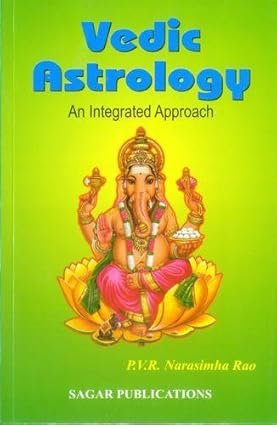


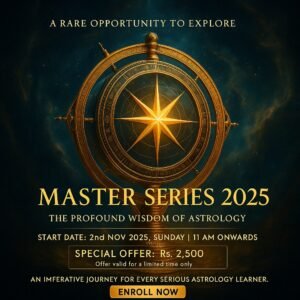

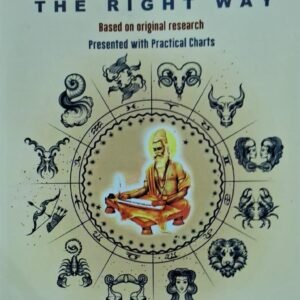
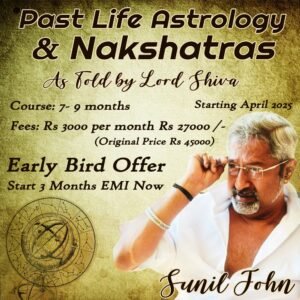
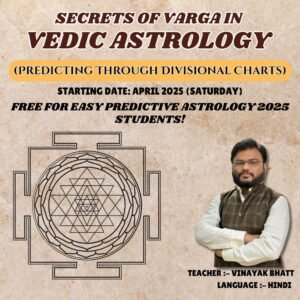
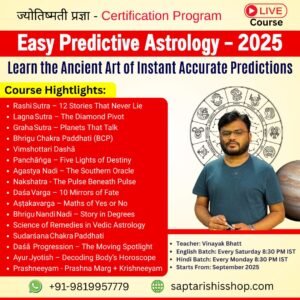
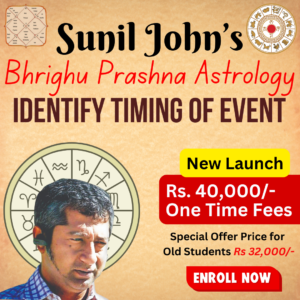
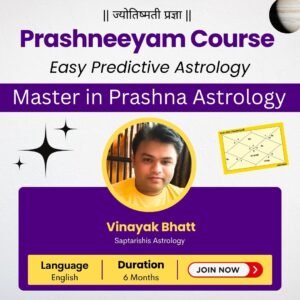
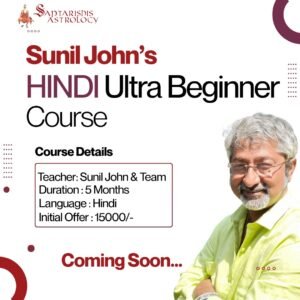
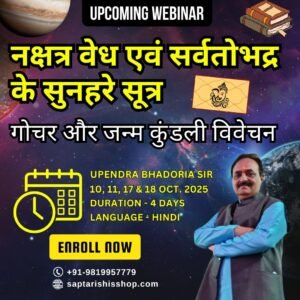
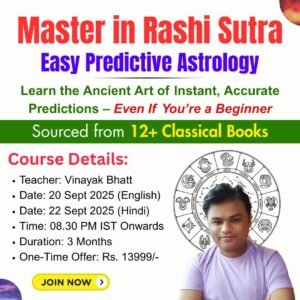
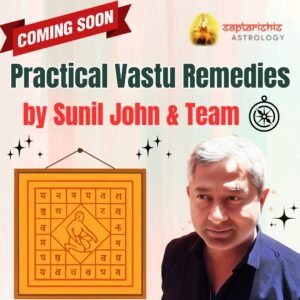


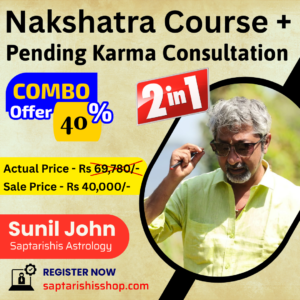
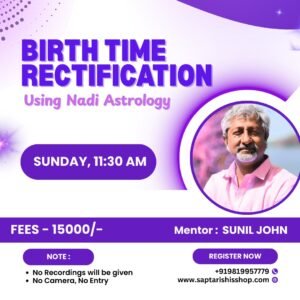
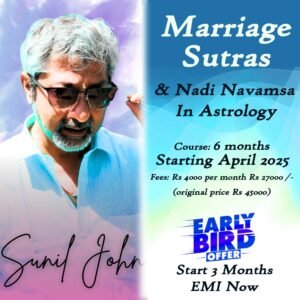
![Predictive Astrology: A Treatise On Muhurta, Marriages and Children[SP] 1 Predictive Astrology: A Treatise On Muhurta, Marriages and Children](https://saptarishisshop.com/wp-content/uploads/2025/07/Predictive-Astrology-100x100.jpg)
![Samudrik Lal kitab ke Farman 1939[SP] 2 Samudrik Lal kitab ke Farman 1939](https://saptarishisshop.com/wp-content/uploads/2025/07/Samudrik-Lal-kitab-ke-Farman-1939-100x100.jpg)
Reviews
There are no reviews yet.